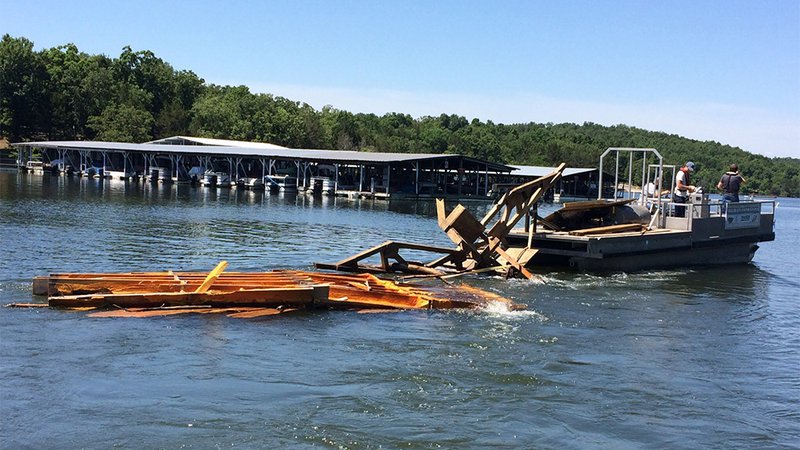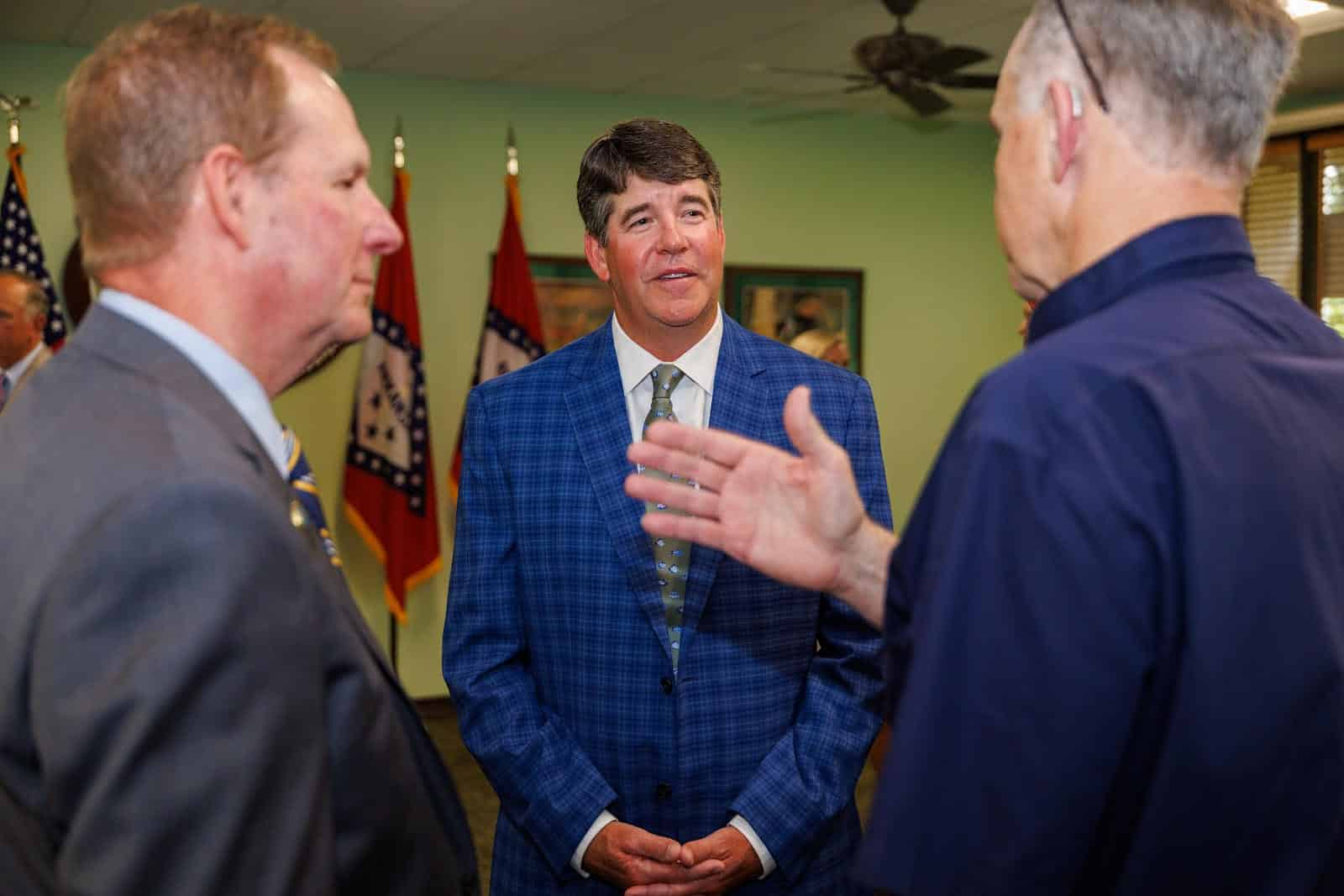Partnership sweeps away debris in Norfork Lake
BY agfc
ON 08-09-2017

Aug. 9, 2017
Arkansas Game and Fish Commission staff from Mountain Home teamed up with the U.S. Army Corps of Engineers to remove dangerous debris left from massive spring floods which paralyzed parts of North Arkansas and created extremely hazardous conditions for boaters on Norfork Lake this summer.
The lakes are receding from the flood now, but many areas within floodplains in North Arkansas and South Missouri were devastated when historic floods swamped the region from April 28 to April 30. Roads, bridges and buildings were swept away and crushed under the force of current spawned from up to 12 inches of rain in less than two days. The water levels and dangerous conditions eventually subsided, but the mess left behind may take years to be removed completely.
One of the hardest hit areas was the North Fork River in Missouri, which flows into Norfork Lake. Flooding destroyed cabins and houses, overtopped bridges, and swept away trees. During the flood, Norfork rose more than 11 feet in 24 hours, resulting in massive amounts of natural and man-made debris.
Citizens began voicing concerns, especially on social media, about the impacts of the flooding on the lake and local economies. Shortly after the rain stopped, AGFC fisheries biologists from the Mountain Home office teamed up with the local Corps of Engineers Office to help tackle the monumental task of cleanup.
“Both agencies recognize the importance of Norfork Lake to local economies,” said Jeremy Risley, AGFC fisheries supervisor. “We wanted to assist in the cleanup efforts. We had the equipment to tackle the large items around the lake that others couldn’t pick up.”
Biologists modified habitat barges, special pontoon boats rigged to place trees and other aquatic habitat into the water, to remove the harmful debris. A pulley system was added to tow away large items or winch them into support boats. Biologists also used another barge to load items.
“We focused on heavy man-made items or items that had metal or wires attached,” Risley said. “We removed whole roofs, floors and walls of buildings. We picked up hot water heaters and furniture.”
Risley says the focus on man-made items was largely due to the inherent danger of sharp, metal objects being left loose in the water. During the cleanup one worker even suffered severe lacerations due to the materials being handled.
“If that had been a boater, skier or someone else who was out on the lake for a day of fun, it could have been much worse,” Risley said.
Many items removed had become waterlogged and extremely difficult to move. Some items, such as furniture, had gained so much water weight, it took multiple biologists and heavy equipment to wrestle them from the water. Items were corralled into designated sites to be hauled away.
As the water continues to recede, more debris has been trapped along the shoreline, but many people are able to get out and enjoy the lake as usual. Risley says the cleanup effort likely will continue for the next few months as more debris is found.
“We’ll have our eyes out for anything we can clear out while we’re conducting our routine monitoring of the different populations of fish in the lake,” Risley said. “We’ll mark larger items and return with the barge to remove them as well.”
Risley admits he has a personal interest in returning the lake to pre-flood conditions, as he and many other biologists and staff are dedicated anglers and outdoors enthusiasts as well as biologists.
“We live here and love fishing on Norfork Lake, so we wanted to do whatever it took to help get Norfork Lake back to the conditions its users could enjoy,” Risley said. “Most of all, we want to say thank you to those who took the time to pick up debris on their own time. We really appreciate those efforts and we bet many of Norfork Lake’s other anglers and boaters do too.”
Recent News

Arkansas Wildlife Weekly Fishing Report
Jul. 10, 2025

Lonoke aquaculturist named to AGFC
Jul. 10, 2025
Subscribe to Our Weekly Newsletter E-mails
Don’t miss another issue. Sign up now to receive the AGFC Wildlife Weekly Newsletter in your mailbox every Wednesday afternoon (Waterfowl Reports are published weekly during waterfowl season and periodically outside the season). Fishing Reports arrive on Thursdays. Fill in the following fields and hit submit. Thanks, and welcome!
